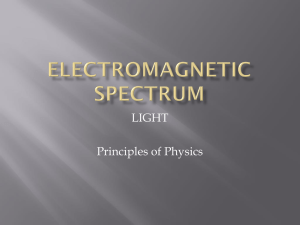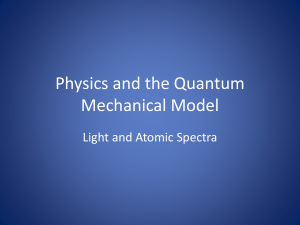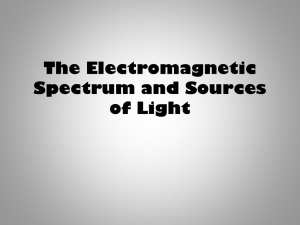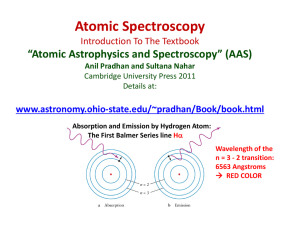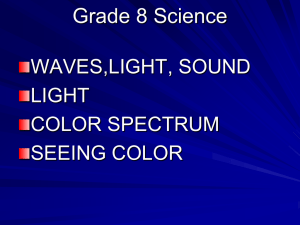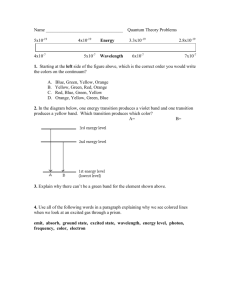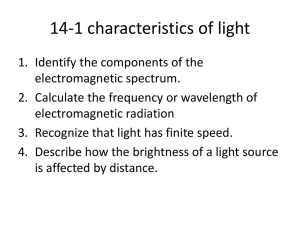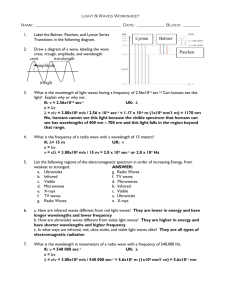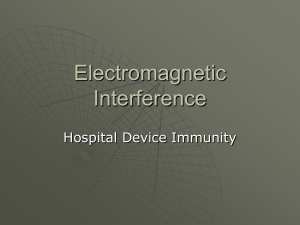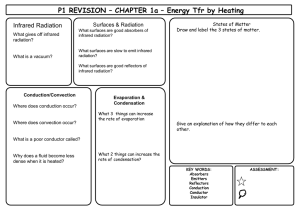PP_Unit2_Day6_ElecSpec - Mater Academy Charter Middle
advertisement
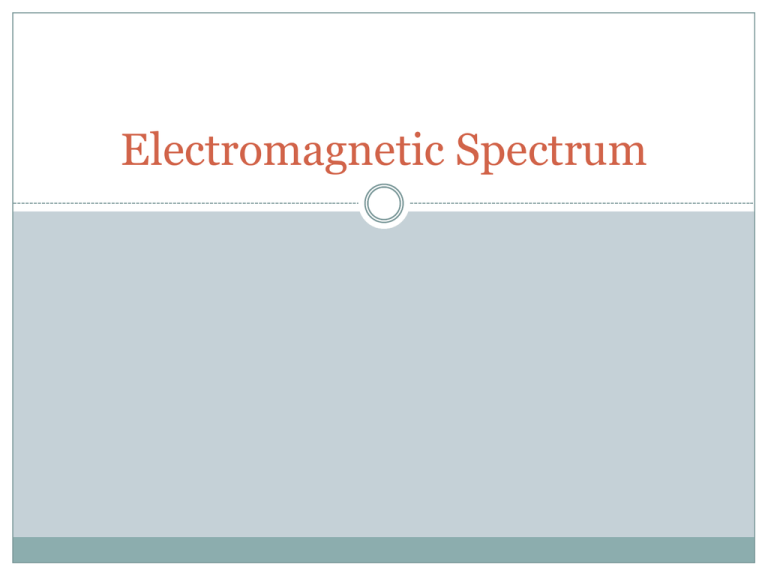
Electromagnetic Spectrum Objectives SWBAT describe the electromagnetic spectrum and explain the relationship between wavelength, frequency, speed, and energy. SWBAT contrast continuous spectra and atomic emission spectra and relate these spectra to orbital diagrams. Essential Question: How do we use the theory of electromagnetism by comparing and contrasting the different parts of the electromagnetic spectrum in terms of wavelength, frequency, and energy, and relating them to phenomena and applications? Catalyst/Do Now Rank the following sublevels from highest energy to lowest energy: 1s, 4s, 2p, 4p, 3s, 3d 2. Like matter, energy cannot be created or destroyed. Give an example of energy being transferred or being converted from one form to another. 3. When an electron moves from a higher energy level to a lower energy level, it loses energy. Where do you think this energy goes? 1. Electromagnetic Spectrum Electromagnetic radiation is a form of energy that exhibits wavelike behavior as it travels through space. Electromagnetic spectrum includes all forms of electromagnetic radiation. Electromagnetic Spectrum All waves are defined by a characteristic wavelength and frequency. Frequency (ν) = number of times a wave cycle passes at point in a given time (Hz or 1/s) Wavelength (λ) = distance between the peaks in a wave wavelength Amplitude Low Energy Amplitude wavelength High Energy • Waves with longer wavelengths (larger waves) have less energy and lower frequencies. • Waves with shorter wavelengths (smaller waves) have more energy and higher frequencies. Wavelength, Frequency and Energy Waves with longer wavelengths (larger waves) have less energy and lower frequencies Waves with shorter wavelengths (smaller waves) have more energy and higher frequencies Relationship between frequency and wavelength Unknown you want Equation to solve for Wavelength (m) Frequency (Hz) c λ= ν c ν= λ c = the speed of light = 3 x 108 m/s What is the wavelength of a radio wave having the frequency of 5.4 x 1010 Hz? Analyze the problem o Known values: ν = 5.4 x 1010 and c = 3 x 108 o Unknown values: λ Solve for the unknown o If c = λν, then λ = c/ν o Substitute c and ν into the equation to solve for the wavelength. The answer should be in units of meters. What is the wavelength of a radio wave having the frequency of 5.4 x 1010 Hz? Answer: λ = 3 x 108/ 5.4 x 1010 = 0.0056 = 5.6 x 103 Guided Practice: We do!! Type of Wave Radio waves Frequency ν (Hz or 1/s) 3 x 106 X-rays λ = c/ν 10-2 Microwaves Ultraviolet Wavelength λ Form of the (m) equation used 3 x 1016 10-10 ν = c/λ Calculate the missing values: Type of Wave Radio waves Microwaves Ultraviolet X-rays Frequency ν (Hz or 1/s) Wavelength λ Form of the (m) equation used 3 x 106 100 λ = c/ν 3 x 1010 3 x 1016 3 x 1018 10-2 1 x 10-8 10-10 ν = c/λ λ = c/ν ν = c/λ Quantization of Energy When electrons move between energy levels, they give off energy in the form of light. We can use the following equation to describe this energy: E = hν h = Planck’s constant = 6.626 x 10-34 Js (J = Joule, a unit of energy) frequency of 4.0 × 1014 Hz. How much energy does red light have? Analyze the problem Known values: ν and h Unknown values: E Solve for the unknown Write the equation: E = hν Substitute h and ν into the equation to solve for the energy. The answer should be in units of Joules. In the visible spectrum, red light has a frequency of 4.0 × 1014 Hz. How much energy does red light have? Answer: E = h x 4 x 1014 = 2.65 x 10-19 frequency of 7.0 x 1014 Hz. How much energy does violet light have? Analyze the problem Known values: ν and h Unknown values: E Solve for the unknown Write the equation: E = hν Substitute h and ν into the equation to solve for the energy. The answer should be in units of Joules. frequency of 7.0 x 1014 Hz. How much energy does violet light have? Answer: E = h x 7 x 1014 = 4.97 x 10-19 Which would have more energy, red or violet light? VIOLET You Do (15 min) Use the relationships to complete the table in your notes. Closing Essential Questions: How can we understand color and light in terms of energy? How is this energy related to electron configurations?

